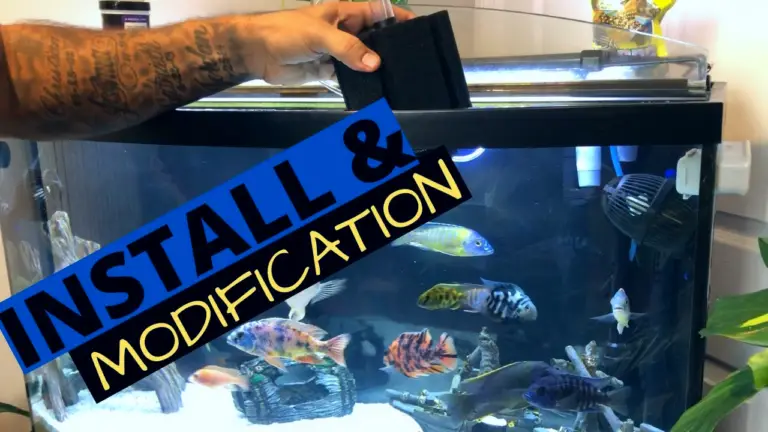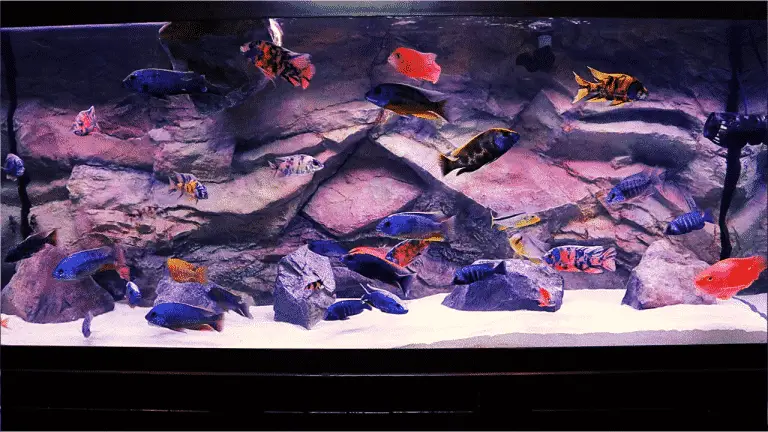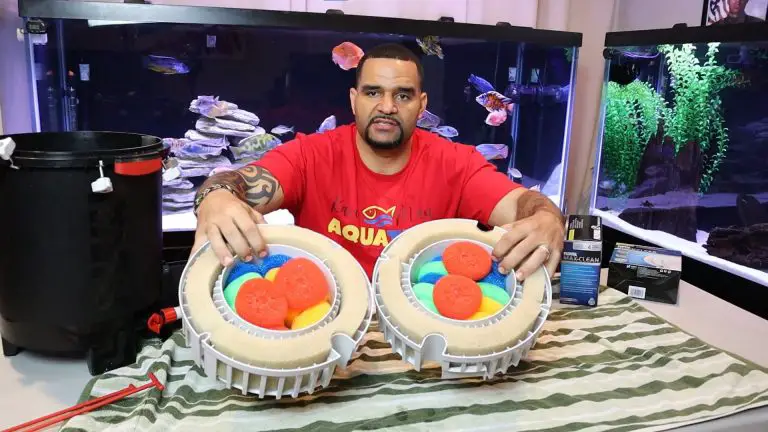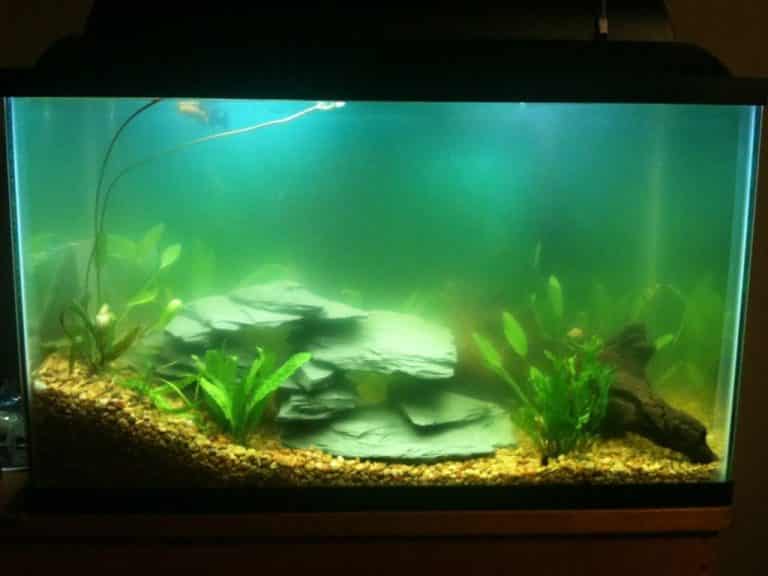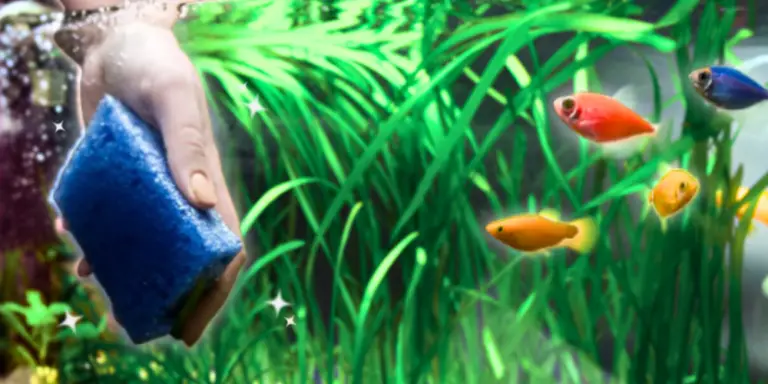A Beginner-Friendly Guide to Tank Maintenance
Good news — tank maintenance doesn’t have to be an overwhelming chore. In fact, you don’t have to go overboard with cleaning, and it’s not just about water changes. Because, after all, proper tank maintenance isn’t just about clean water — it’s about ensuring the health and happiness of your finned companions.
In this blog, we’ll break down the art of tank care into simple steps, making tank maintenance for beginners a breeze. From scrubbing away algae to maintaining water conditions and giving your tank the love it deserves, we’ve got you covered.
7 Simple Steps to Tank Maintenance
Ready to simplify your aquarium upkeep? We’ve got you covered with this beginner-friendly guide to effective tank maintenance. In the following subsections, we’ll walk you through seven easy steps that will keep your tank sparkling and your fish happy. Say goodbye to complicated routines and hello to a thriving aquatic world!
PS: In this guide, we won’t cover filter cleaning, as we assume beginners may have immature filters and it’s essential to build up a healthy colony of beneficial bacteria in the filter media.
Step 1 — Scrub Algea Away
Algae, although it might seem like an unwelcome guest, is actually a living part of your aquatic ecosystem. It contributes to a healthy tank by absorbing excess nutrients and providing oxygen. So, you don’t have to aim for total eradication.
To safely remove algae from tank surfaces and decorations, you’ll need a gentle touch. Using an algae scraper or a soft brush, gently clean the affected areas. Avoid using abrasive tools that might scratch the glass or harm your fish.
Remember, a little algae is okay, and a well-balanced tank can coexist harmoniously with these tiny, green helpers. So, embrace your role as an algae caretaker and enjoy the clean and clear results of this first step in your beginner-friendly tank maintenance routine!

Step 2 — Vacuum the Substrate
This is where we roll up our sleeves and get down to the nitty-gritty of keeping your aquarium clean and your fish happy.
So, why is this step crucial? Well, your tank’s substrate isn’t just for looks — it plays a significant role in maintaining a healthy environment. It’s home to beneficial bacteria and helps break down fish waste and uneaten food. Regular vacuuming keeps this crucial area clean and functioning optimally.
To vacuum, use a siphon or gravel cleaner. Gently hover it above the substrate, and it will suck up the debris without disturbing the beneficial bacteria living below. Remember, it’s all about balance. Clean enough to remove waste, but not so much that you disrupt your tank’s ecosystem.
By making substrate vacuuming a part of your tank maintenance routine, you’re ensuring a clean and comfortable home for your aquatic buddies.

Step 3 — Drain the Tank
Now that we’ve tackled algae and given your substrate some love, it’s time to dive into step three — draining the tank. Why is this essential? Well, imagine living in a house with the same air and water for weeks. You’d want some fresh air, right? Fish feel the same way.
Partial water changes are like a breath of fresh air for your aquarium. They remove impurities, replenish essential minerals, and maintain water quality. So, how do you do it?
Using a siphon or a specialized aquarium vacuum, remove a portion of the water. Depending on your tank’s size and the needs of your fish, this can range from 10% to 25%. Be sure to treat the tap water to remove chlorine or chloramine and match the new water’s temperature to the tank.

Step 4 — Fill the Tank
Now that you’ve said your goodbyes to the old water in step three, it’s time to usher in a fresh, clean start.
After each water change, refilling your tank is like giving your fish a crisp, new canvas to explore. But before you do, there’s a crucial step to remember — treating tap water. We recommend using a de-chlorinator like Seachem Safe or Prime to neutralize harmful chemicals like chlorine or chloramine. This not only makes the water safe for your fish but also ensures the beneficial bacteria in your tank aren’t harmed.
Once your tap water is properly treated, match its temperature with your tank’s water and gently add it back in. Be sure not to disturb your tank’s setup during this process.

Step 5 — Maintain Water Conditions
Keeping a close eye on water conditions is crucial for the well-being of your aquatic friends. Factors like pH and hardness play a significant role in their health and happiness. For example, in an African cichlid tank, maintaining the right parameters is essential. Consider products like Malawi Buffer and Cichlid Lake Salt to help achieve ideal conditions.
These products can be a lifeline for maintaining pH and KH levels and ensuring a thriving aquatic environment. Just remember, it’s not one-size-fits-all, and the requirements may vary depending on your fish species.
By maintaining water parameters, you’re creating a stable and harmonious home for your fish. It’s like tuning in your favorite song to the perfect pitch.
Step 6 — Clean the Tank’s Glass
A clean glass not only lets you enjoy the view but also ensures your fish do too.
You can use glass-cleaning products like Windex or other non-ammonia-based cleaners, but here’s the catch — spray away from the tank and be careful near the tank’s top. We don’t want those fumes drifting into the water.
Just gently wipe down the glass with a soft, lint-free cloth or a specialized aquarium glass cleaner. It’s like giving your fish the best seat in the house to view their underwater kingdom.
With clear glass, your aquarium will shine as a centerpiece in your home. So, wipe away the smudges and let the underwater beauty take center stage.
Step 7 — Give It Time
Congratulations, you’ve reached the final step of our beginner-friendly tank maintenance guide! Now it’s time to sit back, relax, and let nature do its thing. Patience is your best friend.
After all your hard work, your tank is sparkling clean, and your fish are enjoying their refreshed home. But here’s the scoop — newly cleaned tanks may experience some changes as they stabilize. Your fish might adjust to the cleaner water, and you might notice subtle shifts in water chemistry.
Don’t fret — this is entirely normal. It’s all part of the natural cycle of your aquarium finding its equilibrium again. So, give it some time and enjoy the serene beauty of your well-maintained underwater world.

Maintain Crystal Clear Aquarium Water!
As you wrap up this beginner-friendly guide to tank maintenance, remember that maintaining a clean, healthy aquarium is not just a chore — it’s a rewarding journey filled with wonders. Fishkeeping offers a unique opportunity to create beautiful, thriving ecosystems, and the key is to be proactive in your approach.
With dedication and the knowledge you’ve gained here, your aquarium will flourish, and your fish will thank you with their vibrant colors and playful antics. Don’t hesitate to dive deeper into the world of fish-keeping. Contact KaveMan Aquatics for 1-on-1 coaching, and check out our Crystal Clear Aquarium Water eBook for even more expert guidance.
-
A Beginner-Friendly Guide to Tank Maintenance
Discover stress-free tank maintenance for beginners in our guide. Simplify tank maintenance and create a thriving aquarium!


